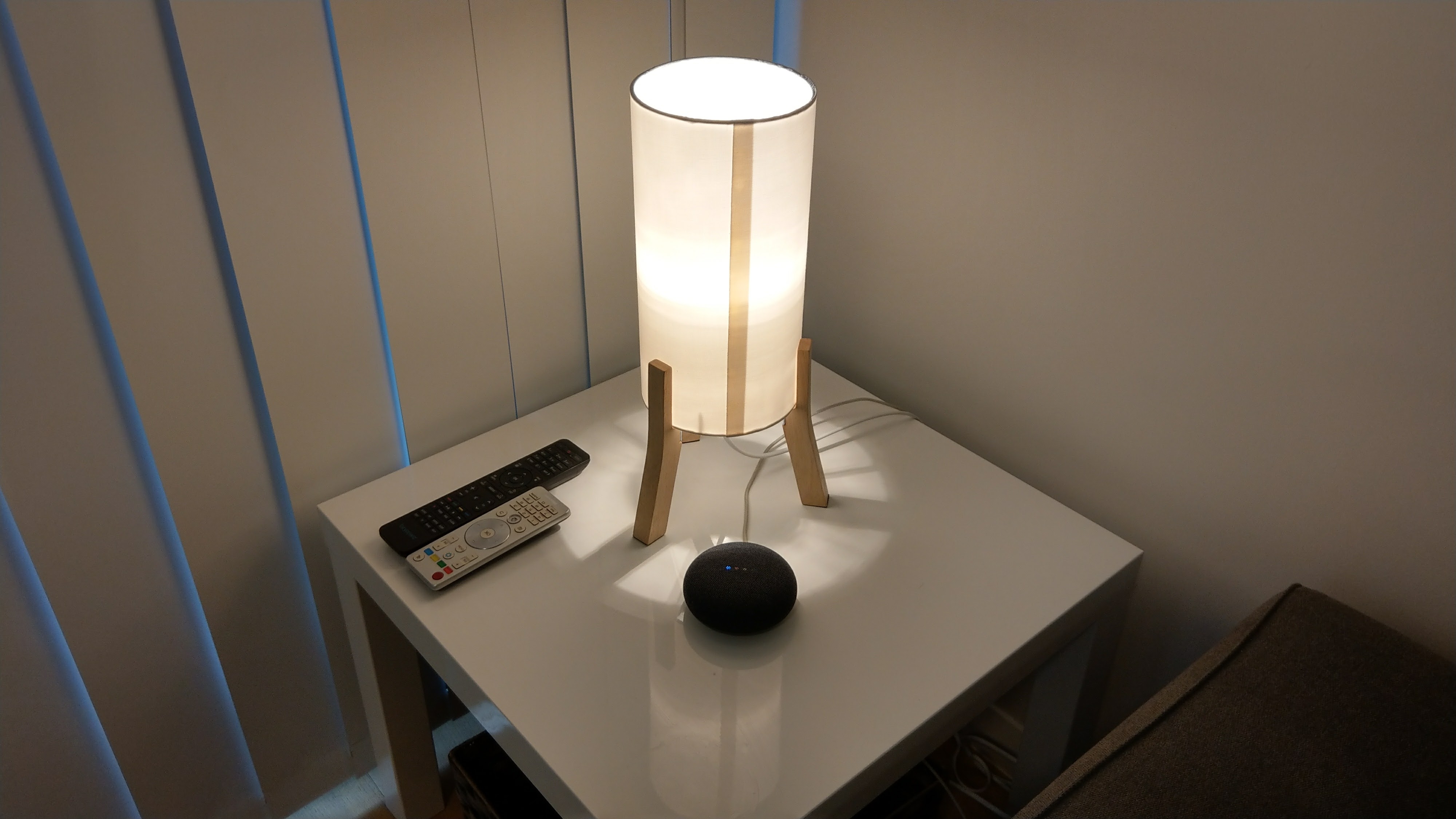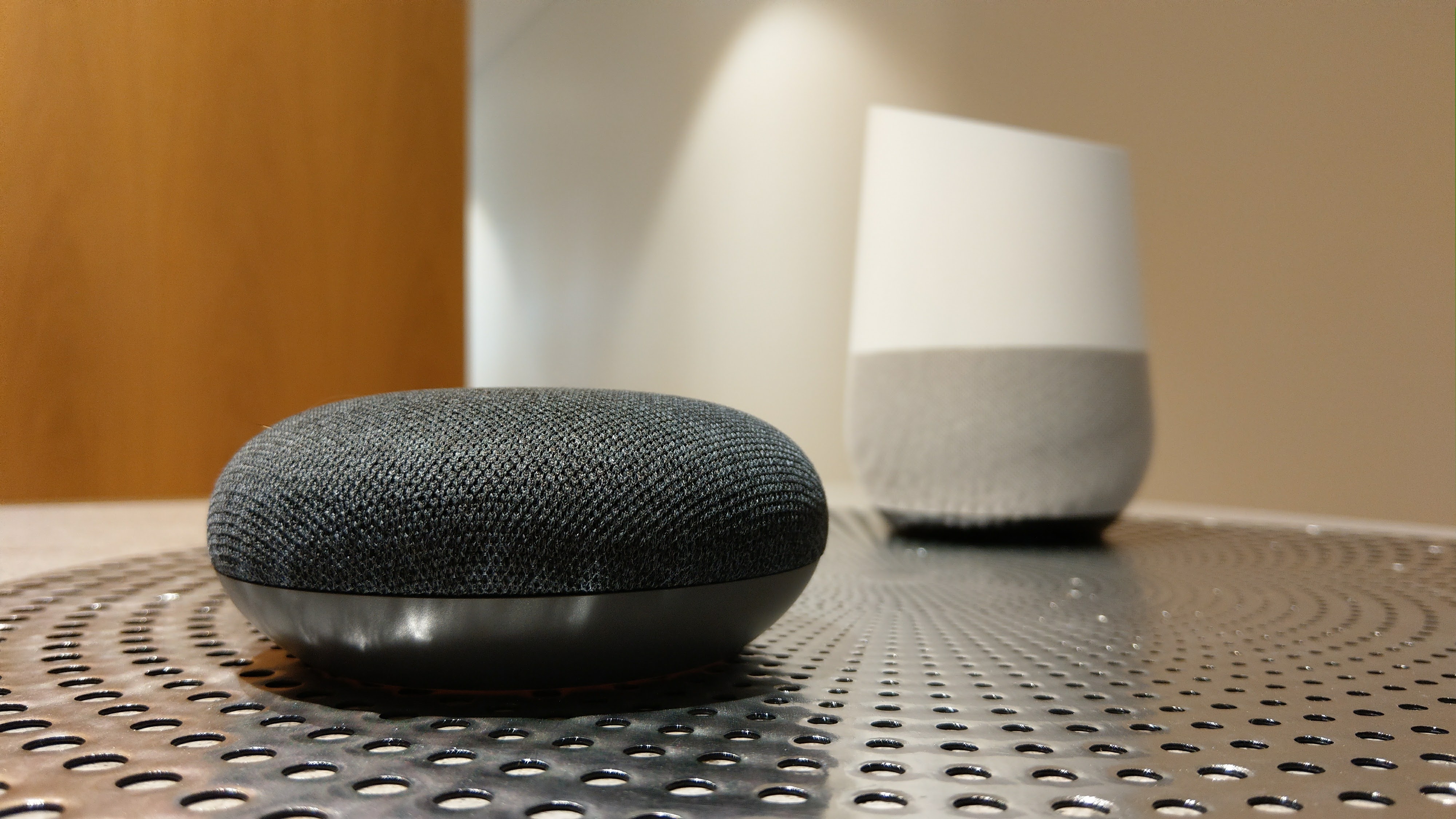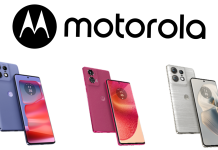It’s been a year since Google introduced the world to Google Home, one of the company’s first physical hardware products and generally the best way to interact with the then-nascent Google Assistant.
Google came quite late to this party, with Amazon’s Echo (its window to their Alexa assistant) being on the market almost a full year prior. Amazon expanded its product line into the lower end of the market with Echo Dot, bringing much of the functionality of Alexa in a smaller speaker at a lower price, leaving Google’s larger Home hanging at its $100+ price point.
The recent launch of the Google Home Mini was thus both expected and welcome – a smaller, cheaper Google Home with the tradeoffs you might expect. Google also launched the premium higher-end Google Home Max, putting the Assistant into premium quality, larger speaker. That product sadly won’t be coming to Australia at launch – we’re expecting to see it come here eventually, but by the time it does Google’s strategy of adding the Assistant into so-called “smart speakers” from other companies may well bear fruit. Google Home Max might not be needed by the time it comes here.
Home Mini’s relative positioning very much depends on your retail market. In Australia, we don’t have Amazon’s Echo products readily available yet (although they do work fine if you import them), and Apple’s Siri-powered speaker isn’t coming until the end of the year. Google’s really getting a first-mover advantage here.
So, Google Home Mini – its second generation of hardware – is here, just a few months after the local launch of Google Home. It’s a $79 (USD$50) alternative to the original home which comes in at $200 (USD$130). At that price, it’s almost a throwaway purchase – why wouldn’t you buy one? Let’s take a closer look.
Hardware
Home Mini is designed with a soft, organic look – it has no straight edges, save the base it sits on. The device’s profile looks like a puck or a pebble, with the curve of its plastic base matched by the curve of the top, covered with material. It’s available in three colours – grey (Chalk), dark grey (Charcoal, our review unit) and red (Coral).
Google’s made much of its use of familiar materials in its hardware products over these past couple of years, especially in the design of their Daydream View VR headset but also in the base of the original Google Home. The material is intended to make the product’s look and design blend in and become one with your bedroom/kitchen/livingroom, and the colours on offer certainly help.
The top of Home Mini is sensitive to touch on the left and right sides of the device to change the volume, and there’s four multi-colour LEDs arranged in a line. Those LEDs will light up, blink and animate in various ways to show bootup, communication and volume adjustments. There was intended to be a larger central tap zone you could use to summing the Assistant, but Google has permanently disabled the main central tap area, thus effectively removing it from the product. You’ll thus need to say “Okay Google” or “Hey Google” to summon the Assistant on Home Mini, but that’s okay with me – I’m rarely next to it when I want to talk to it anyway.
The underside of our Mini is a deep red / orange non-slip rubbery surface with a subtle Google “G” etched into it. This surface is sticky enough to ensure that Mini won’t accidentally slide off the table, bench or shelf on which you place it. Very welcome, especially if you’ve placed it somewhere thats within reach of flailing limbs, exploring toddlers or curious animals.

There’s a Micro USB port on the back of the device. This has attracted far more interest than it should have, really. It’s not USB-C, but the power draw of the device likely doesn’t need it to be and using Micro USB likely helps keep the cost down. Either way, you’re going to plug it in and put it on a shelf so it really doesn’t matter how power is delivered to the device. There is one annoying aspect though – it’s rather inset into Google Home Mini’s hard plastic shell, and this means some of the chunkier Micro USB cables might not fit into the space around it.
One note on the power plug is that it’s round. While not an aesthetically bad choice it does make it a little snug when plugging it into a powerboard. It’s an interesting choice, but shouldn’t be too bad for most people. It’s got a nice embossed Google ‘G’ logo in the plastic, so it looks nice anyway.

One interesting side-effect of the device’s small stature and Micro USB port is that people seem to assume it’s actually battery-powered and thus portable. Not true of course, though you can run it from a USB battery pack. The best way to summon the Assistant on-the-go remains your actual phone.
vs Google Home Classic
As much as we like the design of the original Home, the Mini fixes a lot of questions that that product raised – why does it need to be so big; what’s that wedge design for; what if I don’t want that big white plastic thing on my kitchen bench where it’ll become a talking point? It’s designed to blend in and be inconspicuous. It’ll sit there passively doing nothing until called-upon.
Mini is also the perfect companion to an original Home, should you want to spread your home automation throughout the house. I live in a two-level apartment, and I wanted to place a Google Home somewhere it would hear my voice when I come in the door. I also don’t fancy spending another $200, so I’ve set up Mini on a coffee table upstairs and moved the main Home into the downstairs study.
Of course, now that Mini is here, you could kit your house or apartment out with them completely instead of using a normal Home unit. You won’t lose any functionality, as it provides the same Google Assistant as its big brother. You might need to be a little careful of its placement though – its smaller size means less microphones which might just mean a few missed instructions.
Unfortunately Home Mini has a bit of a tendency to not hear you, especially in a noisy environment. Google can say they’ve optimised the microphones to ensure it can pick up your voice while music or a TV show is playing, but the reality is that if Home Mini can’t distinguish your voice it’s not going to respond to your commands. My neighbours will tell you I’ve had some amazing arguments with its big brother, and my housemate will attest I’ve raised my voice more than once at the Mini trying to get it to stop playback before deciding I needed to mute the TV (and then rewind whatever I was watching by a minute or so).
Speaker Quality
Audio quality in small speakers has improved by leaps and bounds of late. Just a few years ago, you could expect a product of Home Mini’s size to sound tinny and lack any form bass whatsoever. Those days are gone.
There’s ten steps to the volume controls, and you’ll be able to hear Home Mini respond to you clearly from the other side of a normal room without venturing too high. I have my Home Mini set to about 25% volume and it’s loud enough to be audible but unobtrusive. In testing the limits of the volume, I set it to maximum and had a chat with the Assistant … then became quite conscious that my neighbours would hear everything that’s going on.
I don’t listen to music on Home Mini, but then I also wouldn’t listen to it on the standard Home either. Both don’t cut it for me and Home has been set up right next to my Sonos Play 1 for a while. What I will listen to though are podcasts – and you can do that with a voice command to play either from Google’s own podcast index or from a podcast app like Pocket Casts.
One of the Google Assistant’s little tricks is to play animal sounds on command. Ask it “What does an [animal] sound like?” – Home Mini’s speaker is good enough to fool my cat into thinking there’s another cat around.
(Andy’s fine, by the way)
Life With the Google Assistant
Home Mini brings the Google Assistant into your home for a little under half of the price of the original Google Home. Assistant is growing new features and capabilities all the time, like new home automation options or the recent launch of Actions on Google for Australia.
Since launch though, a couple of things have dogged its usefulness for me personally. Some of its core functionality seems to be a little lacking in terms of distinction between “home” (or “personal”) and “work”.
I have a confession to make. While my apartment is kitted out with a Google Home and now a Google Home Mini, I haven’t really found a place for the Assistant in my home routine. I don’t spend long enough in one place in the morning to listen to a daily briefing, and I only have a single Philips Hue smart bulb. I’m planning to add some Hue strip lights to my kitchen bench and TV cabinet but those things cost both time and money, and I just haven’t gotten around to them yet. I also have a housemate who – amazingly – doesn’t have a Google account, so I can’t train the Google Assistant to recognise his voice as distinct from my own.
Fortunately though, I have trained the Assistant to recognise my own voice, so it can tell me about upcoming events, but therein lies a problem – I have a personal Google accounts, my Ausdroid Google account (a Google apps account) and another Google account for my day job – while I am all three of those users, there’s no way for the Assistant is going to bring them all together into the one interface for me. So, my Ausdroid and my work calendars – which are actually where all my appointments go – are never reflected in my upcoming schedule.
If you have a simpler life than me, Assistant’s “My Day” feature is pretty neat. It’ll read your upcoming appointments to you and add some local news to the end. More often than not this meant that it played an ABC News podcast at the end of the My Day briefing, and it might also send that podcast to be played on a local Chromecast device.
Home Automation
Support for home automation standards and devices is impressive, and seems to be growing all the time. You can mix and match devices from multiple smart home systems, and Home will act as a central hub for everything.
I’ve got a multicolour Philips Hue bulb in my setup, but instead of going with Hue everywhere, I’m thinking of switching to Xiaomi Yee since it showed up in the Home app as a supported product and the products are quite well-priced. This weekend just gone, I added some TPLink Kasa products to my setup – a HS100 smart plug and an LB120 tunable white light bulb to my setup, so I now have a voice-controlled lighting setup in my lounge room. I’m looking at putting a LIFX light strip behind my couch (or under it, or under my kitchen bench for maximum cool-home effect), and wondering what I might be able to do to add some lighting to the cabinet housing my Transformers collection.
If I didn’t have a Google Home or a Home Mini, I wouldn’t have done any of this. It encourages a bit of tinkering, and you might well find yourself ducking out to pick up a smart bulb or some other item to add to your home automation setup.
I did find the Google Home app a bit buggy when assigning devices to rooms. You might need to set a room, exit and reload. Hopefully it’ll be fixed up soon. It might be useful to be able to ask a Google Home to identify itself and its room, but despite “Nickname” being a field in the Google Home app, “Hey Google, whats your nickname?” sadly only gets a quip as a response.
Voice Control for Casting
One of the best features of the Assistant is the fact that you can now use your voice to start playing videos on Chromecast, provided you’re using a compatible video streaming service. For Australia, that’s currently Stan and Netflix.
You can ask the Assistant, “Hey Google, play [show] from [service] on [device]” and it’ll start up the Chromecast receiver app and let Stan or Netflix work out where to start playback (and if the show’s only on one service, you don’t even have to give it that). If you’ve given it a series then it turns over control to the app to resume or play the next episode of the show for you. Given a movie, it’ll start or resume from where you left off. You can also say “Hey Google, pause” (or stop, play, or resume).
You almost don’t need to start the app anymore, except to link your account so the Assistant knows who you are on each related service. It’s pretty great, and it also works for music (Play Music, Spotify), streaming radio (Tune In Radio) and podcasts too (natively, or through Pocket Casts).
So I’ve pretty much settled on Google Home and Home Mini’s Assistant as a gateway to home automation in the future, and voice control for my Chromecast. That’s not all you can do with Home (or Home Mini) and the Assistant, though.
Actions on Google
With the recent launch of Actions on Google, we’re seeing more and more local companies launch what are essentially “chatbot” services for Google Home. Woolworths can help you maintain a shopping list, National Australia Bank can help you understand their products and Domain can help
To use Actions on Google, you need to tell the Assistant “Hey Google, talk to [service]”. You don’t need to install an Action, which is a big plus for the way Assistant works over other options like Alexa, but I can forsee some naming issues as companies stake out their spoken identities in Google’s voice command ecosystem.
For now, its early days. Actions on Google usually takes you through to an AI chatbot that will lead you through a product brochure or perform some basic functions. It’s kind of like talking to an AI-powered interactive voice recording system on the phone. AI chatbots have their own voice too, so its obvious when you’re speaking to someone else’s assistant – a great touch.
I tried out Woolworths, which helps you maintain a shopping list; NAB which offers information about their products but ultimately directs you to their website (I’m not a customer, but NAB didn’t ask me to sigh in to an account anyway); and Domino’s Pizza which actually does let you order pizza online. I also tried Uber, but it’s not supported in Australia yet – wonder why?
Despite Google’s advances in exposing Actions via an in-app directory (you’ll find it under “Explore” in the Home app), it’s still not great at showing you actions that are pertinent to what you want to do. There’s also a disconnect between the functions and features offered by Actions versus what Google Assistant knows it can do for you — seconds after speaking to the Dominos Pizza Action, I asked Google Assistant “Okay Google, can you order pizza for me?” and it just gave me a list of local pizza shops. Where’s the context from what I was just doing?
You can also set your own shortcuts through the Home app on your phone by defining your phrase and the action it should run. You can use this to shorten some actions that might otherwise be long-winded or unnatural. I set a shortcut “Okay google, can I have some mood lighting” to turn on my Philips Hue bulb and turn it to pink. Try not to judge.

The value you’ll get from Google Home Mini, like Google Home, depends on how well the Assistant fits into your lifestyle. A lot of that comes down to feature support from Google and developer support from third parties.
It requires some work from the user to remember what you can and can’t do with the Assistant in terms of voice control when it comes to video playback and casting – for example, I use Netflix and Stan just fine via voice control but Foxtel Now doesn’t work.
In a future where all of the big services and devices feature Google Assistant or Google Home integration, it’ll be great – you will be able to speak your commands and things will happen accordingly. We’re not quite there yet, though Google Home and the Google Assistant represent a great start in that direction and the Mini’s asking price is a small outlay to get in on the action.
Google Home Mini costs $79, and is available from a wide variety of retailers including Telstra, JB Hi-Fi, Officeworks, Good Guys, Harvey Norman and Kogan from Tuesday October 24.





One frustration I had with my GHM was that despite changing the settings to Celsius in the Home app, it kept telling me temperatures in Fahrenheit.
So, I tried saying “Hey Google, tell me temperatures in Celsius from now on” and she answered “I will remember that”, and she has 🙂 .Very clever
” if Home Mini can’t distinguish your voice it’s not going to respond to your commands”
This is why Google turning off the top button has turned me off buying one. Shame.
I bought the bigger Home along with Five Hue white (wish I’d got coloured now) Bulbs, a Hue hub and two Dlink power adapters. Love using it for the lighting and turning tv on or off. Already had a couple of chromecasts so use it to play music and vids too but haven’t been successful with getting Stan or Netflix shows to play on tv yet. Had a problem with Home understanding when I said Toilet light so I renamed that room to Abbott (because he is an unflushable turd). Unfortunately ended up with Home saying “OK, turning the Abbott… Read more »
Xiaomi Yeelight have light strips too. I haven’t tried them yet but will most likely be my next purchase (I want the super cool under kitchen counter lighting).
Yeah I want the under-bench lighting too — but I’m easing myself into it 🙂